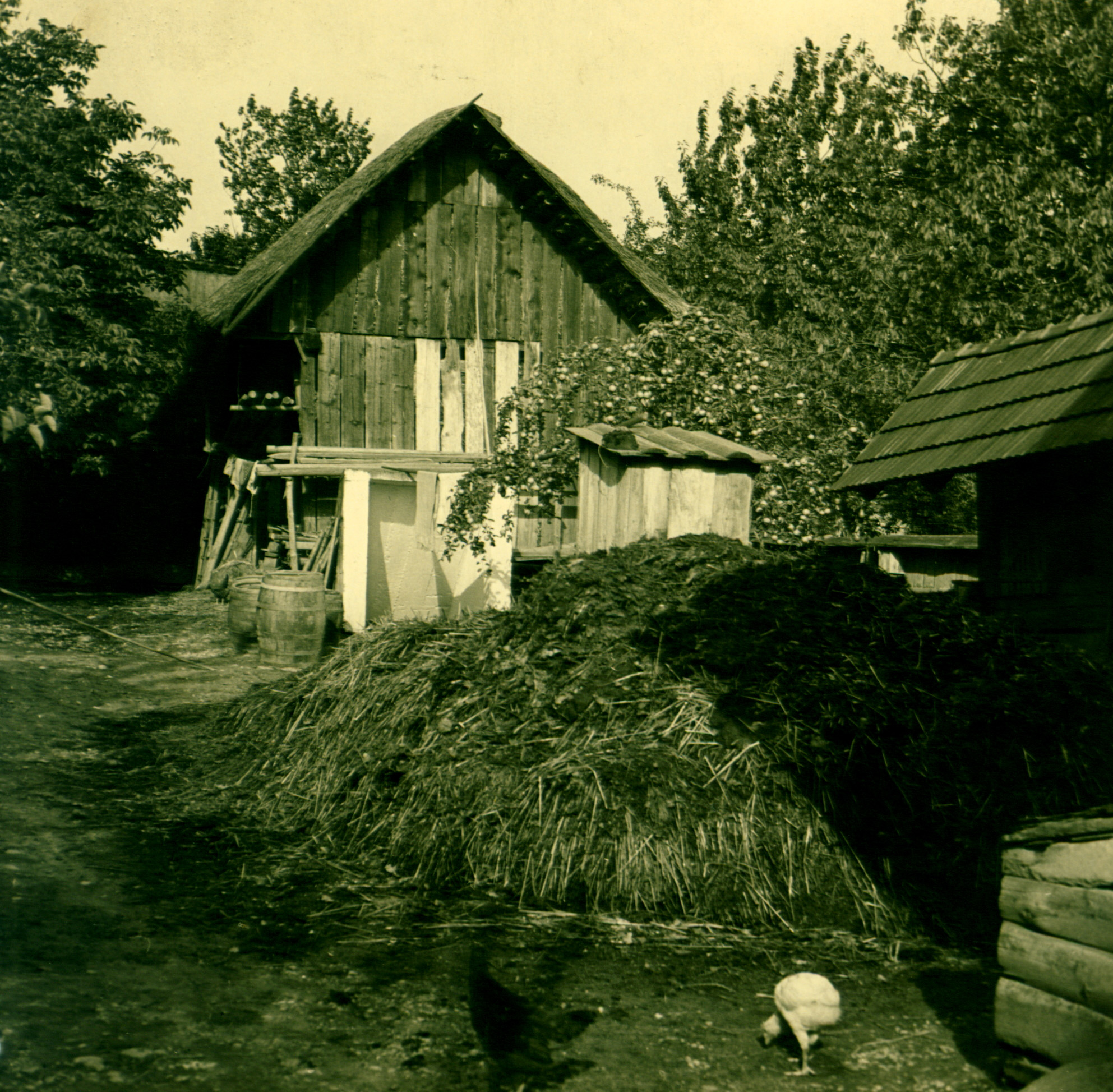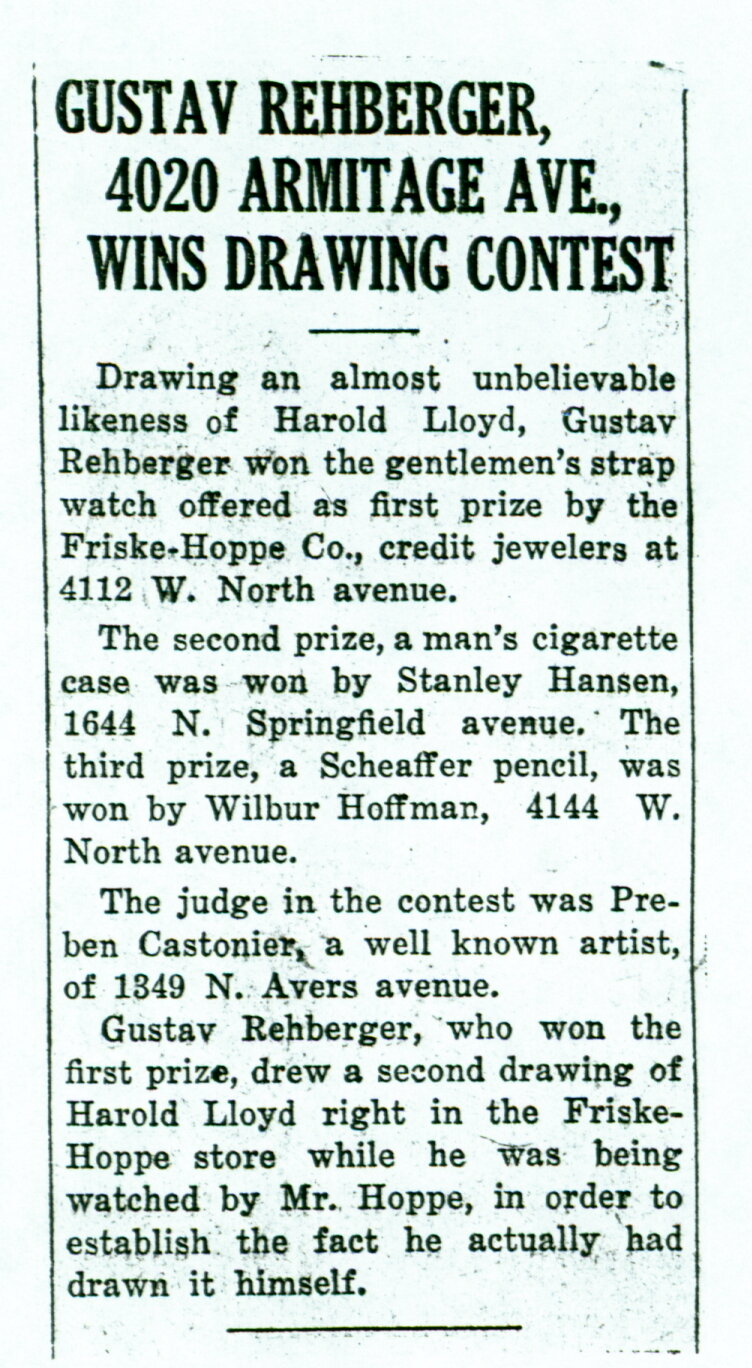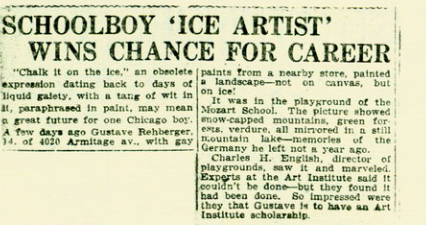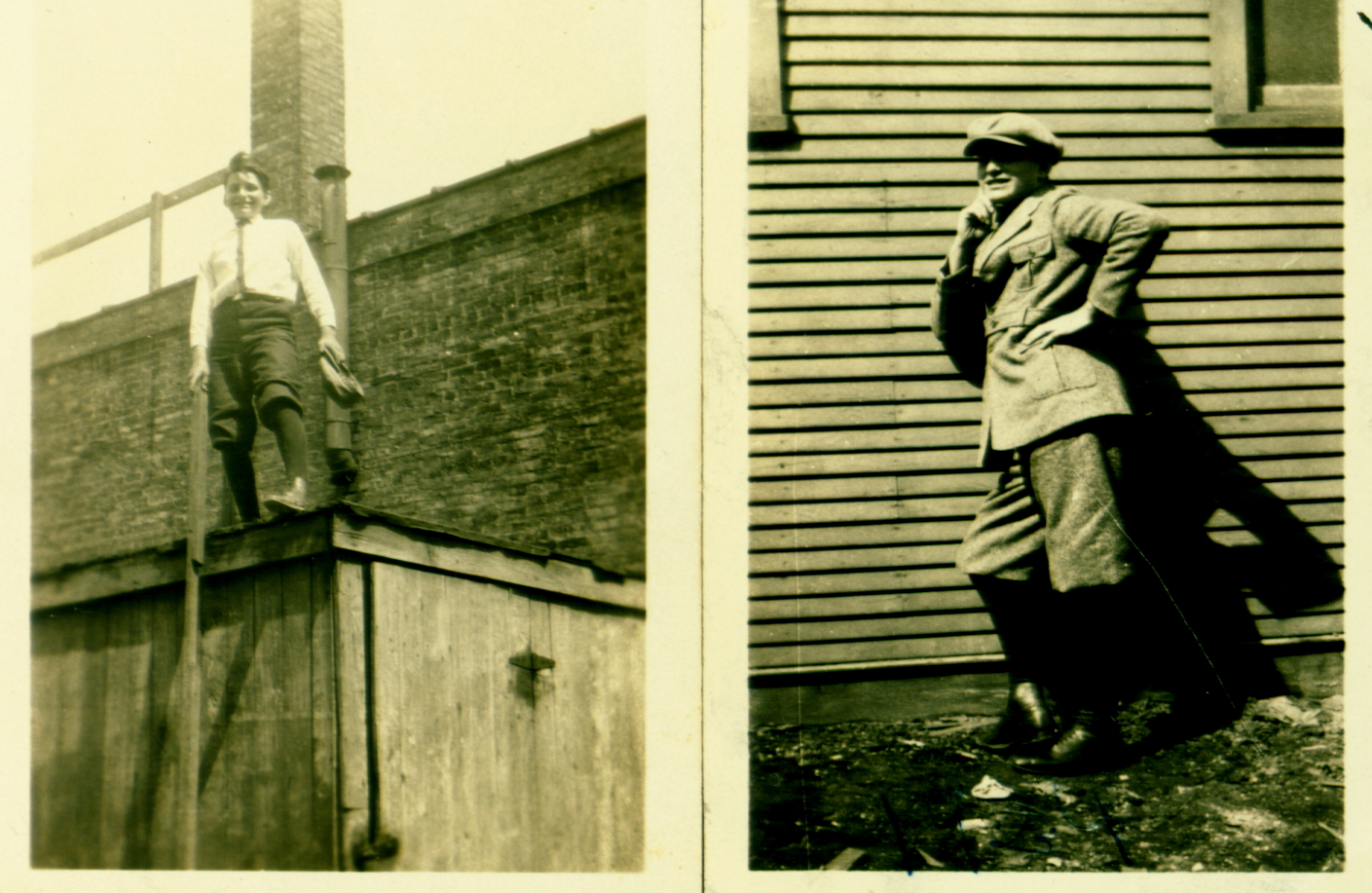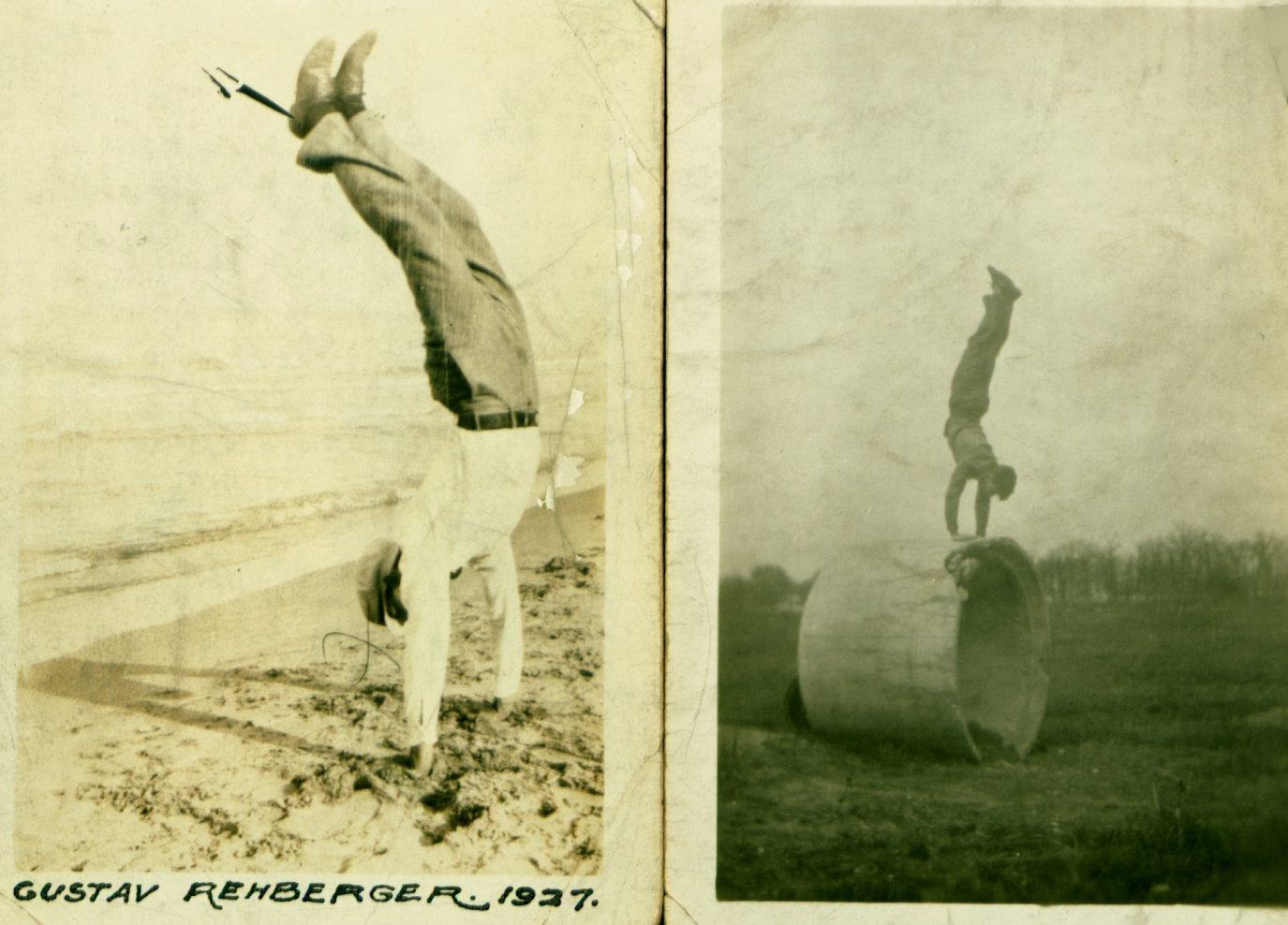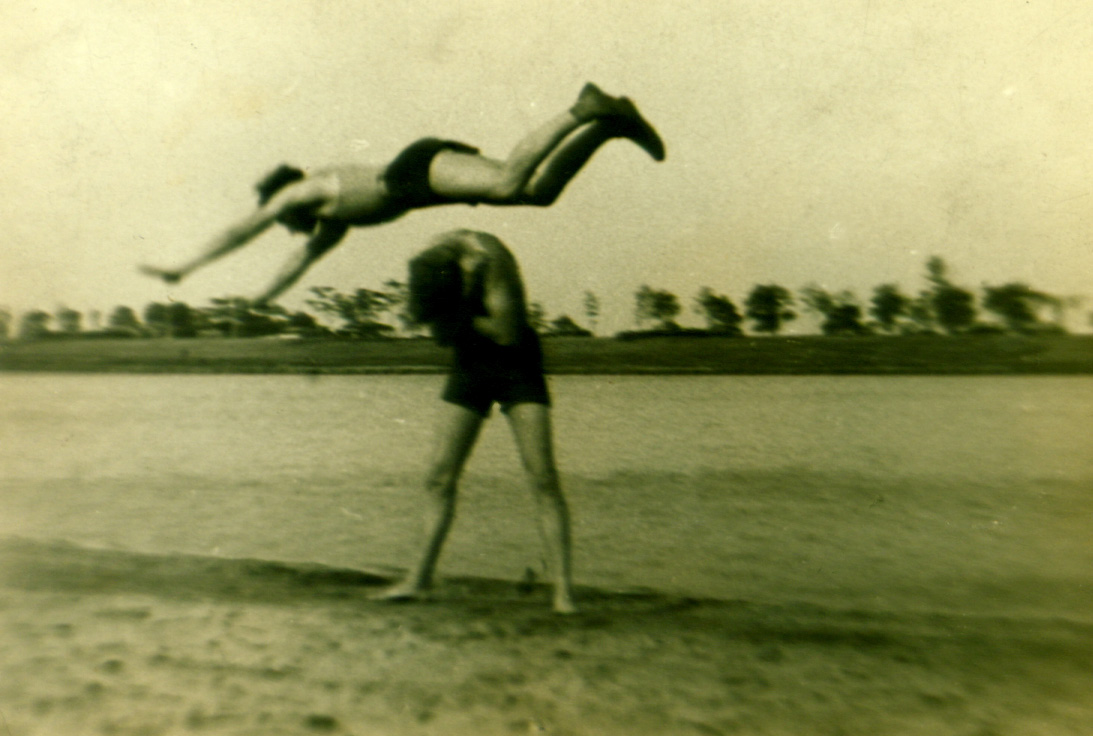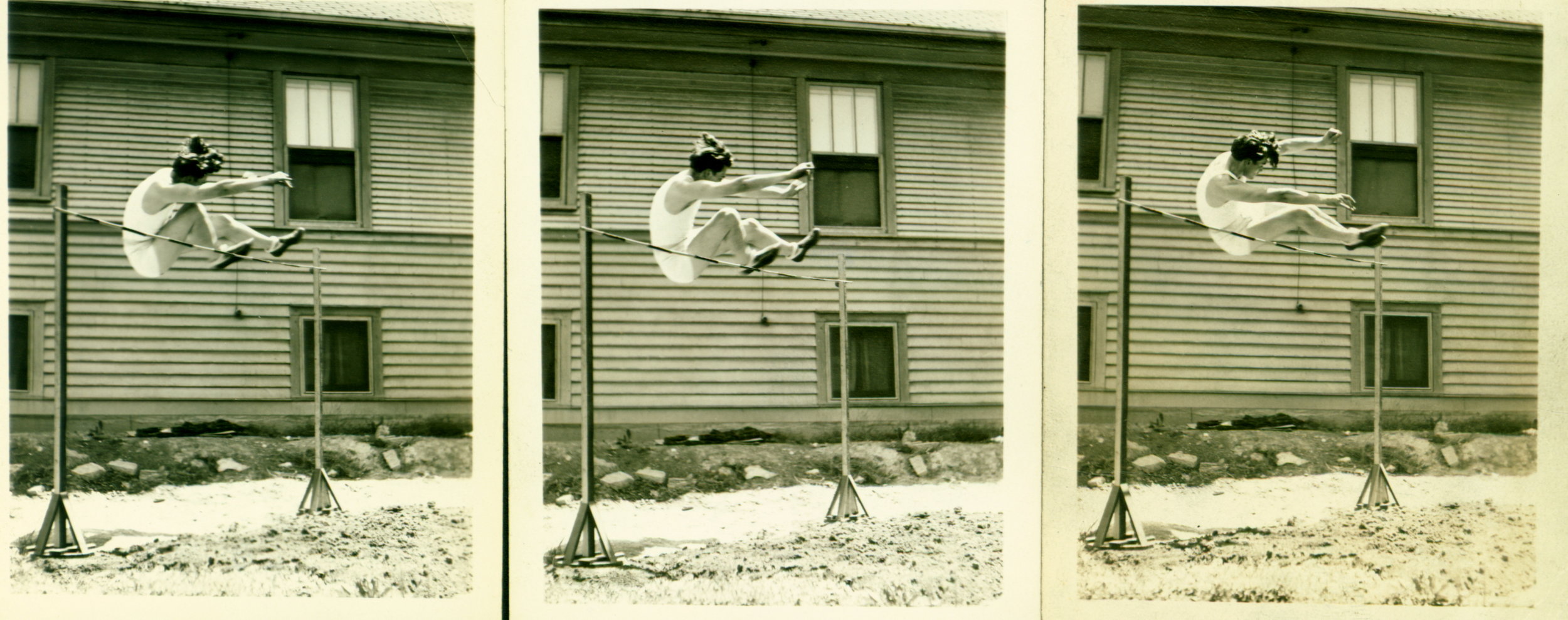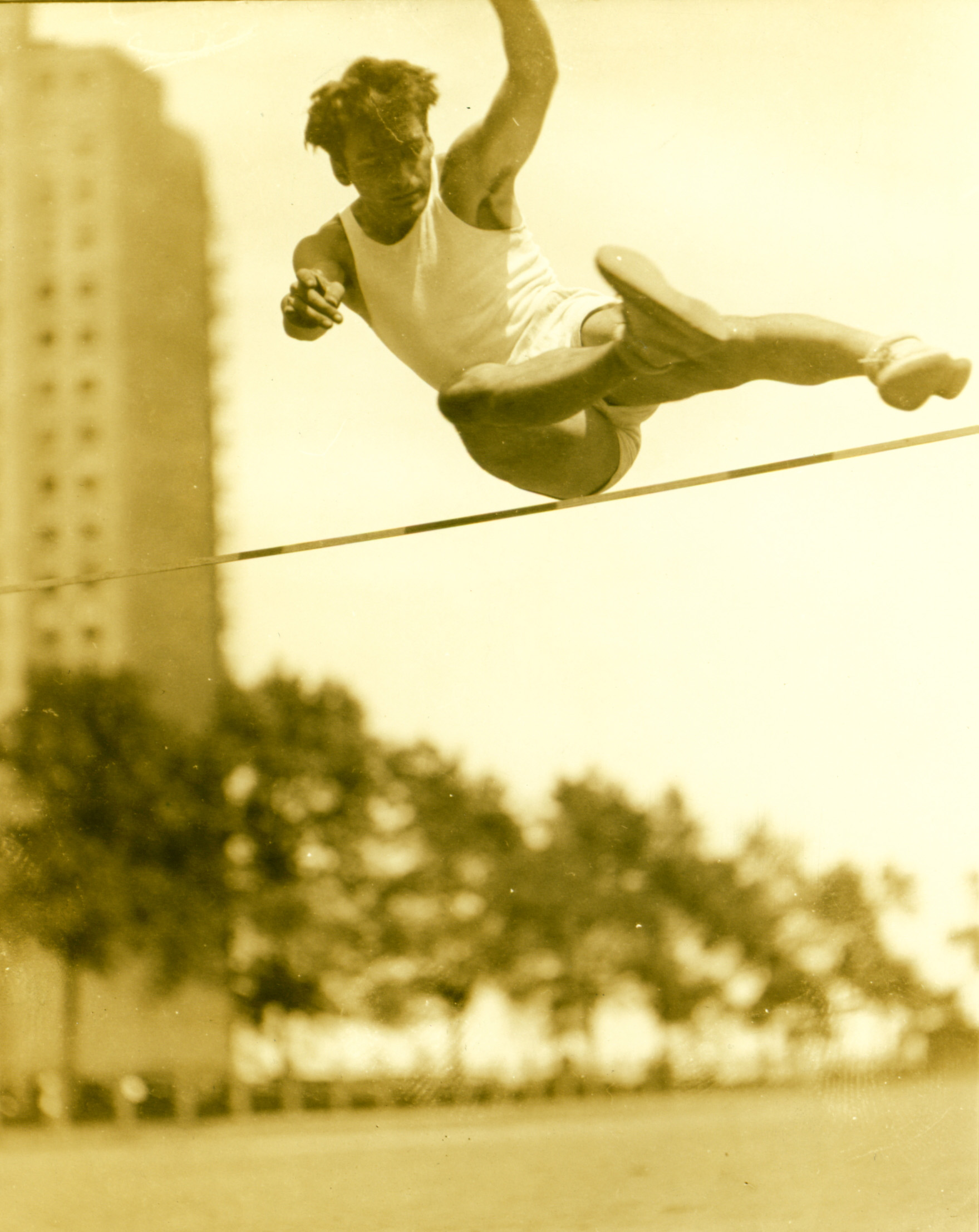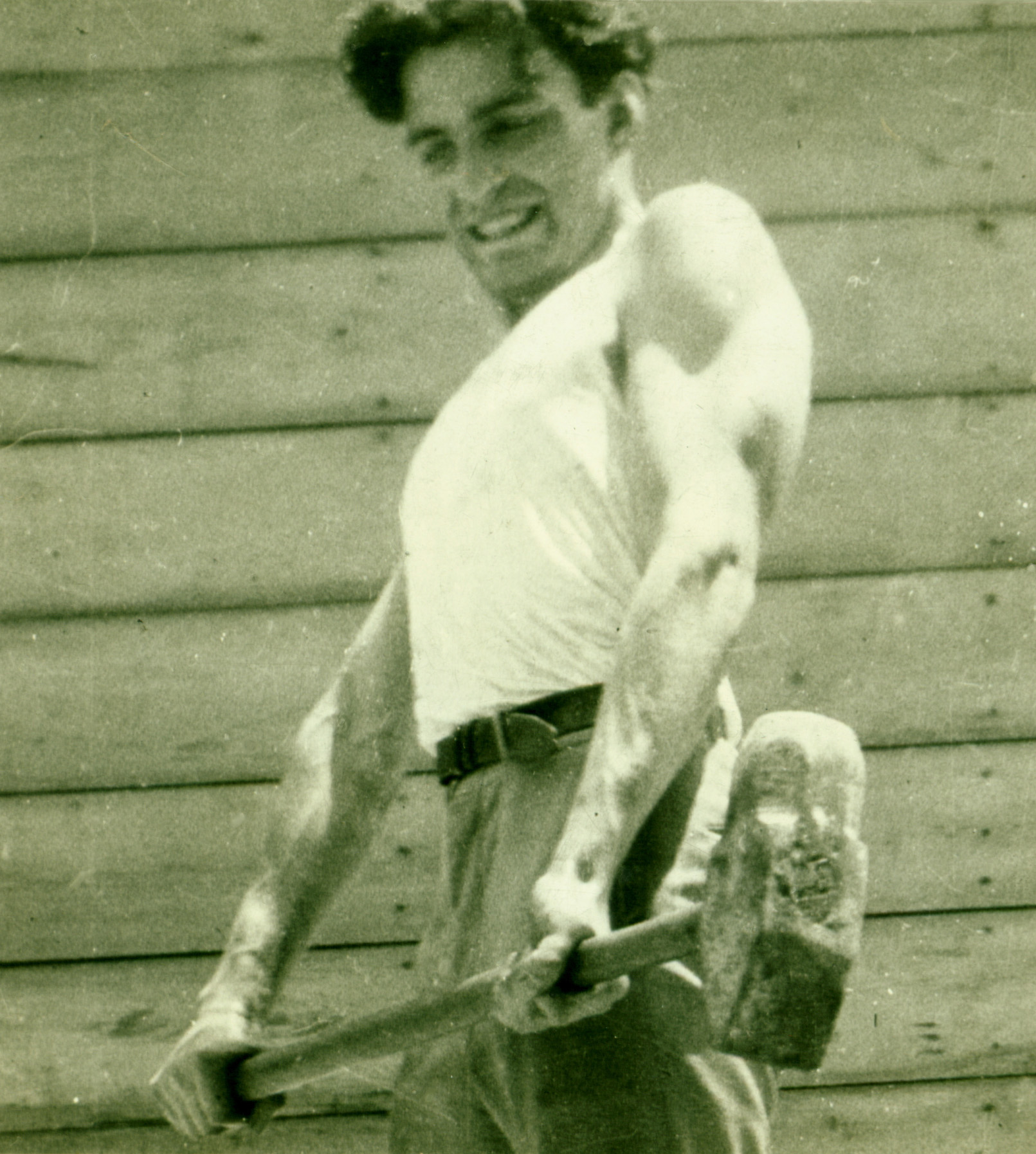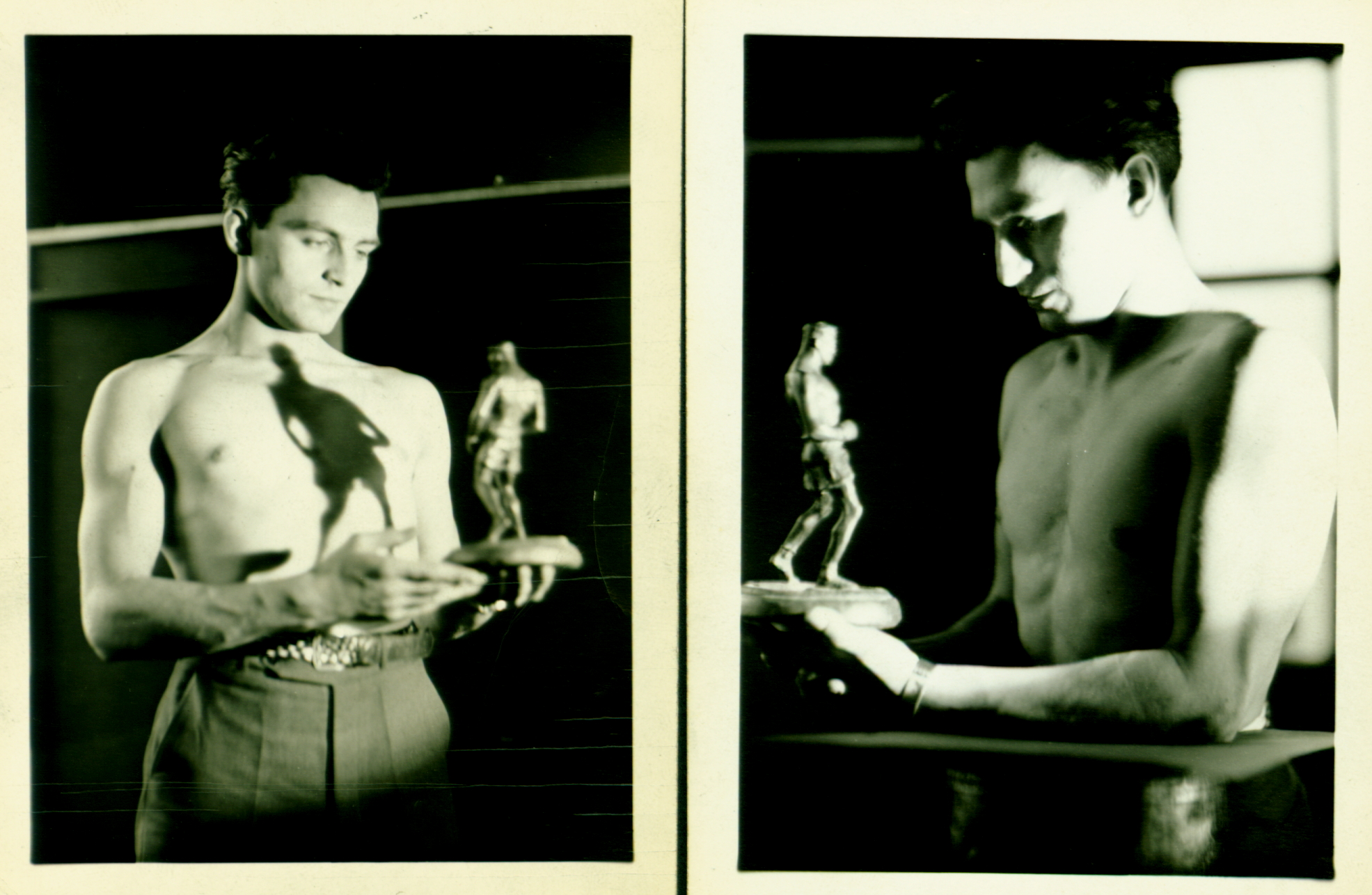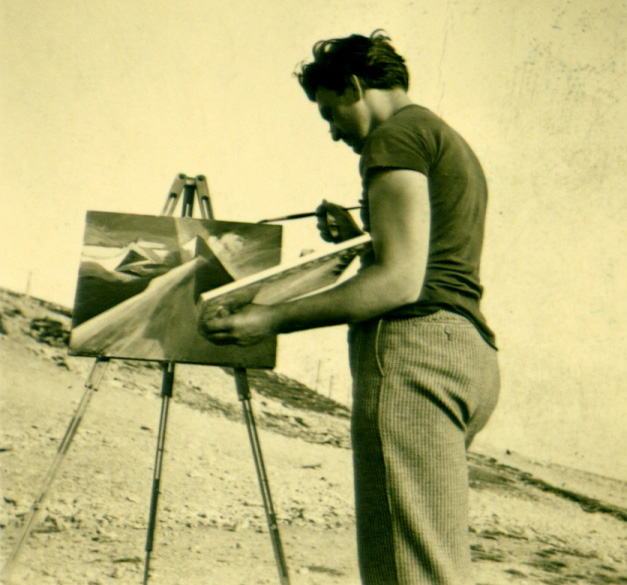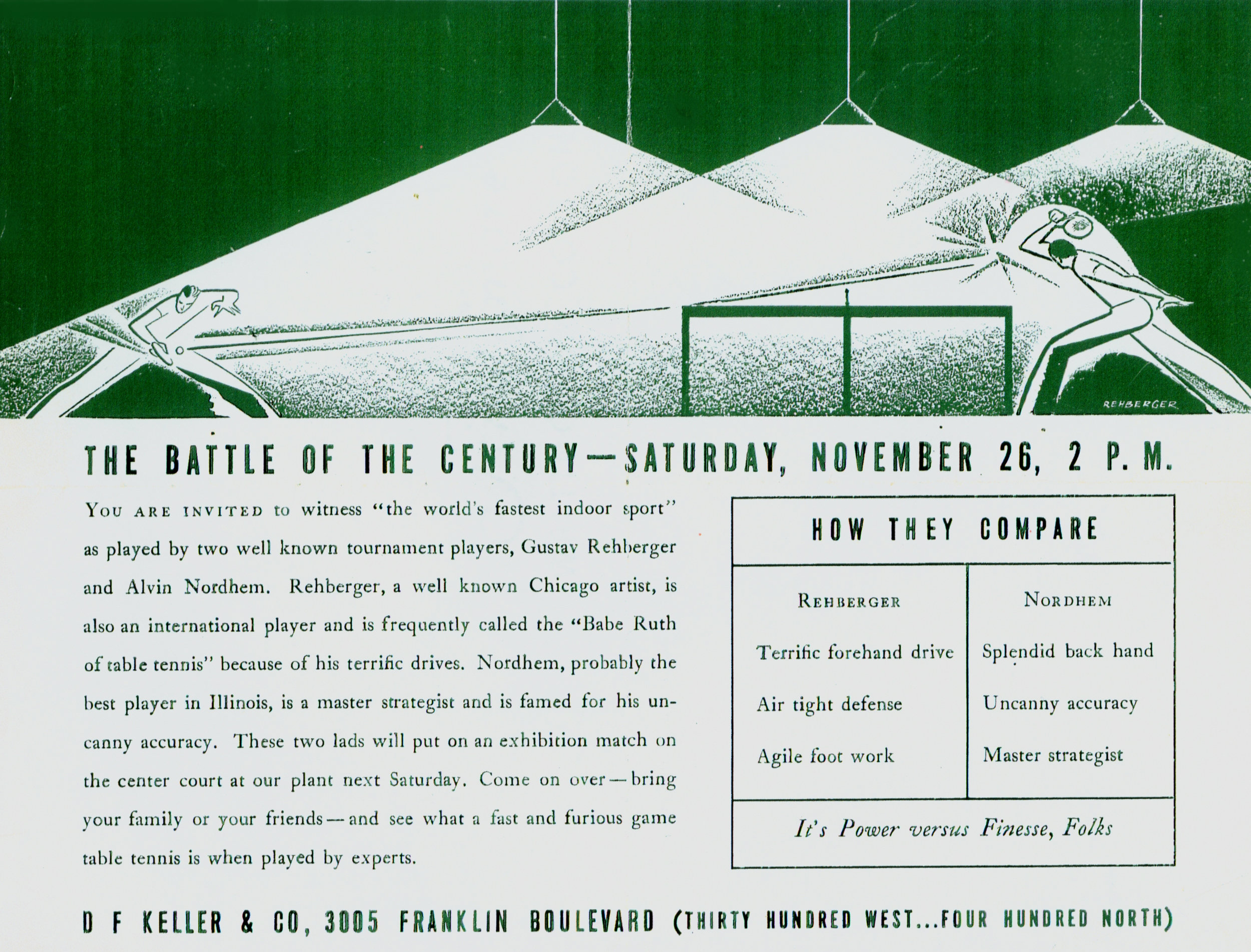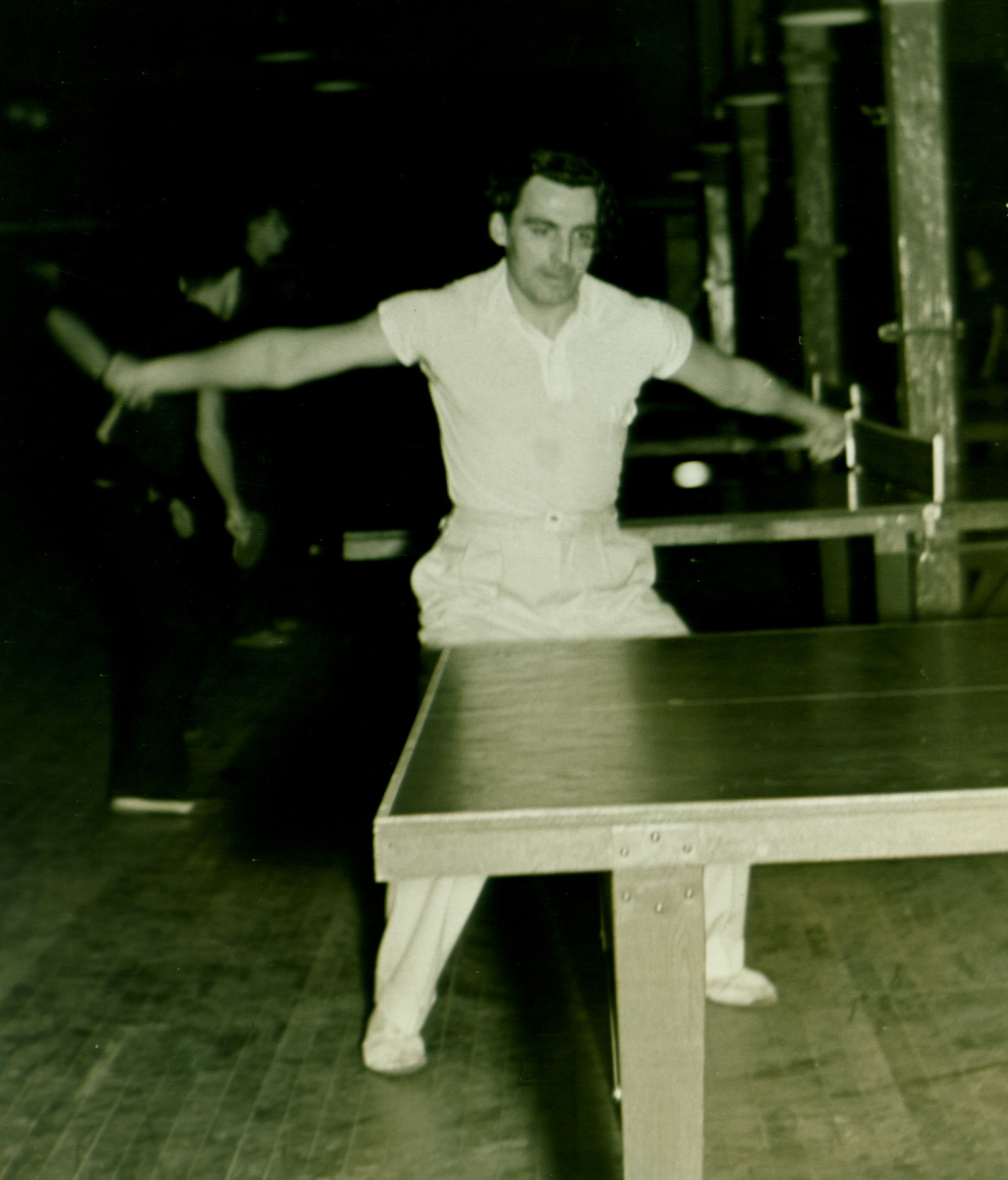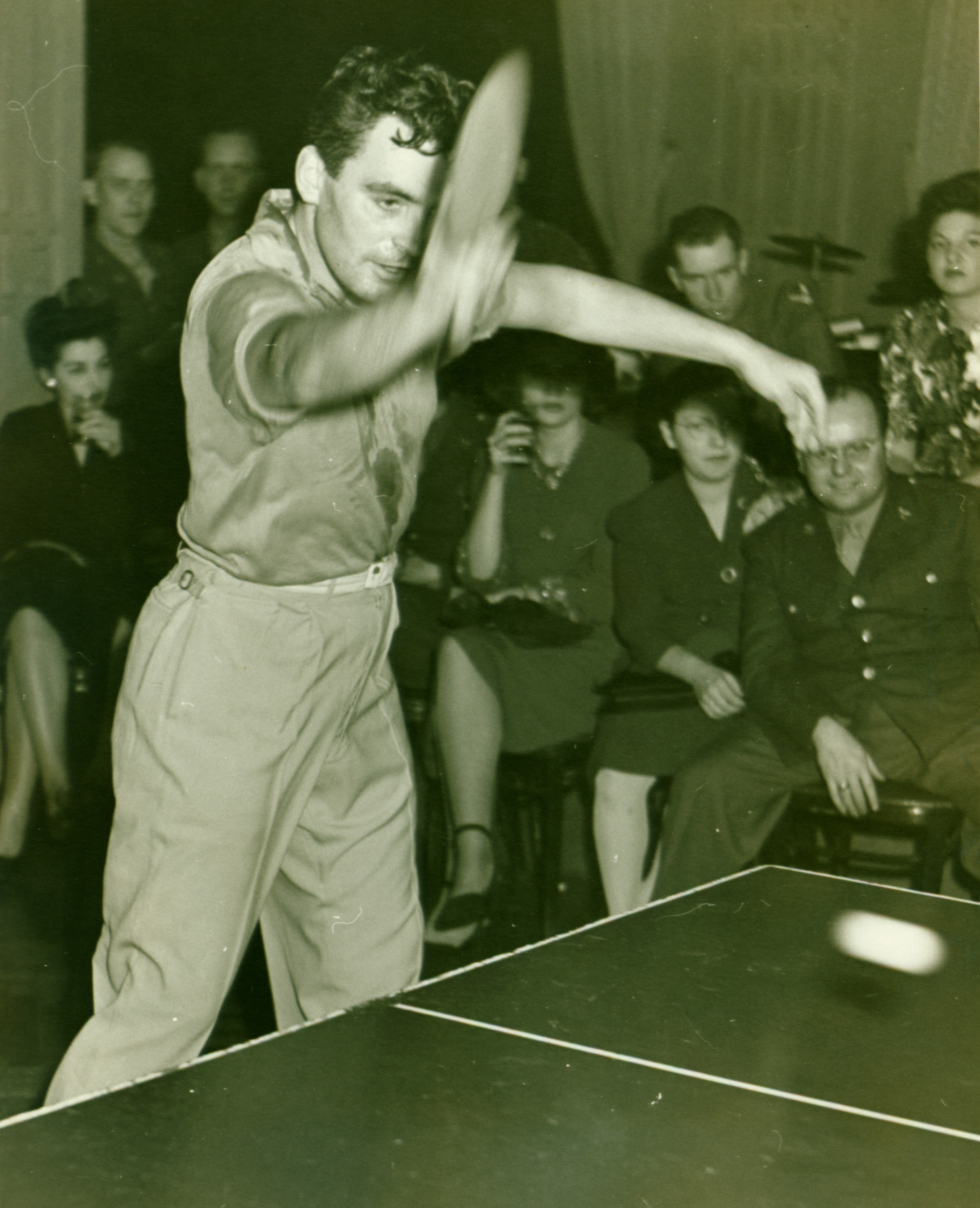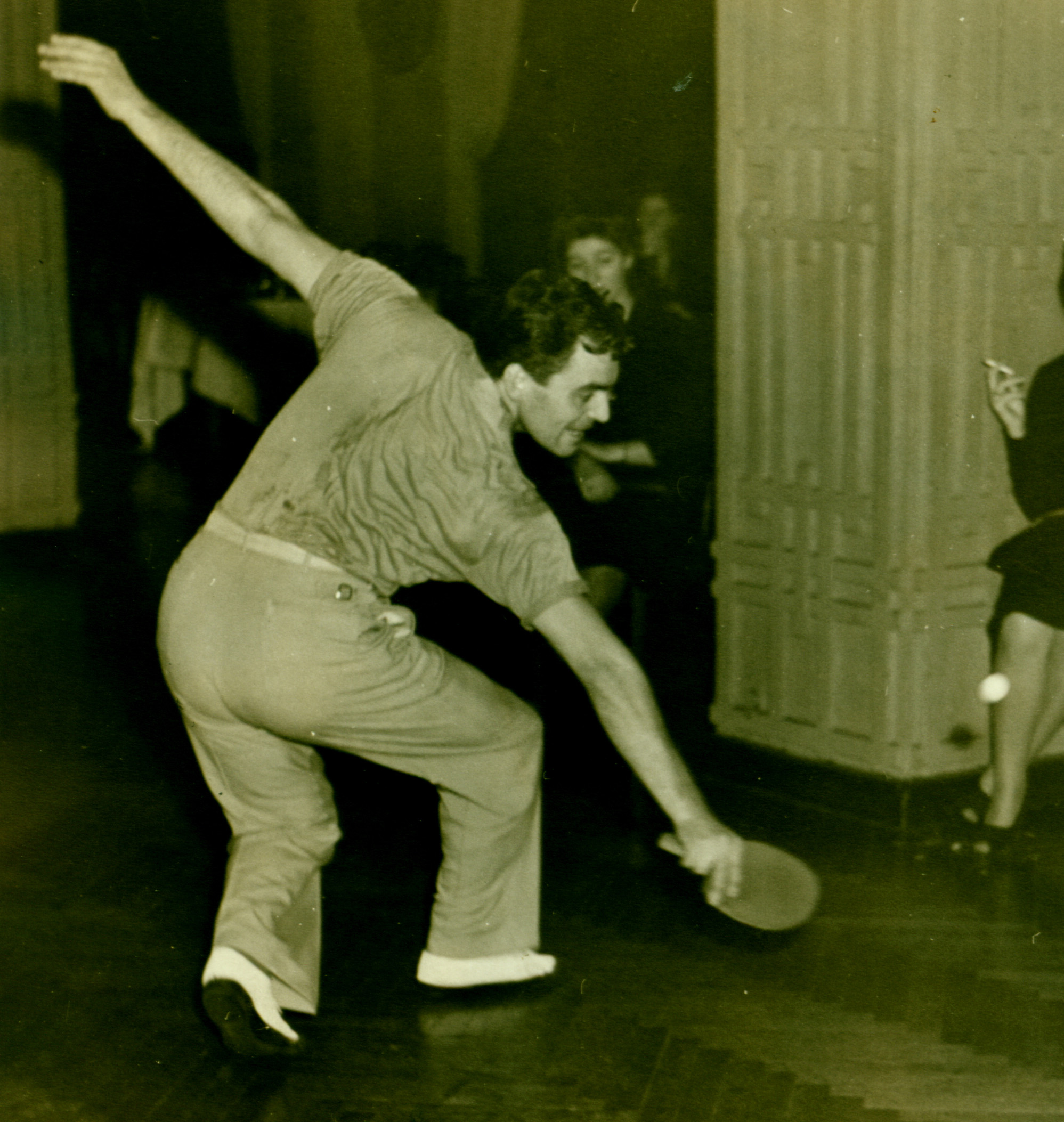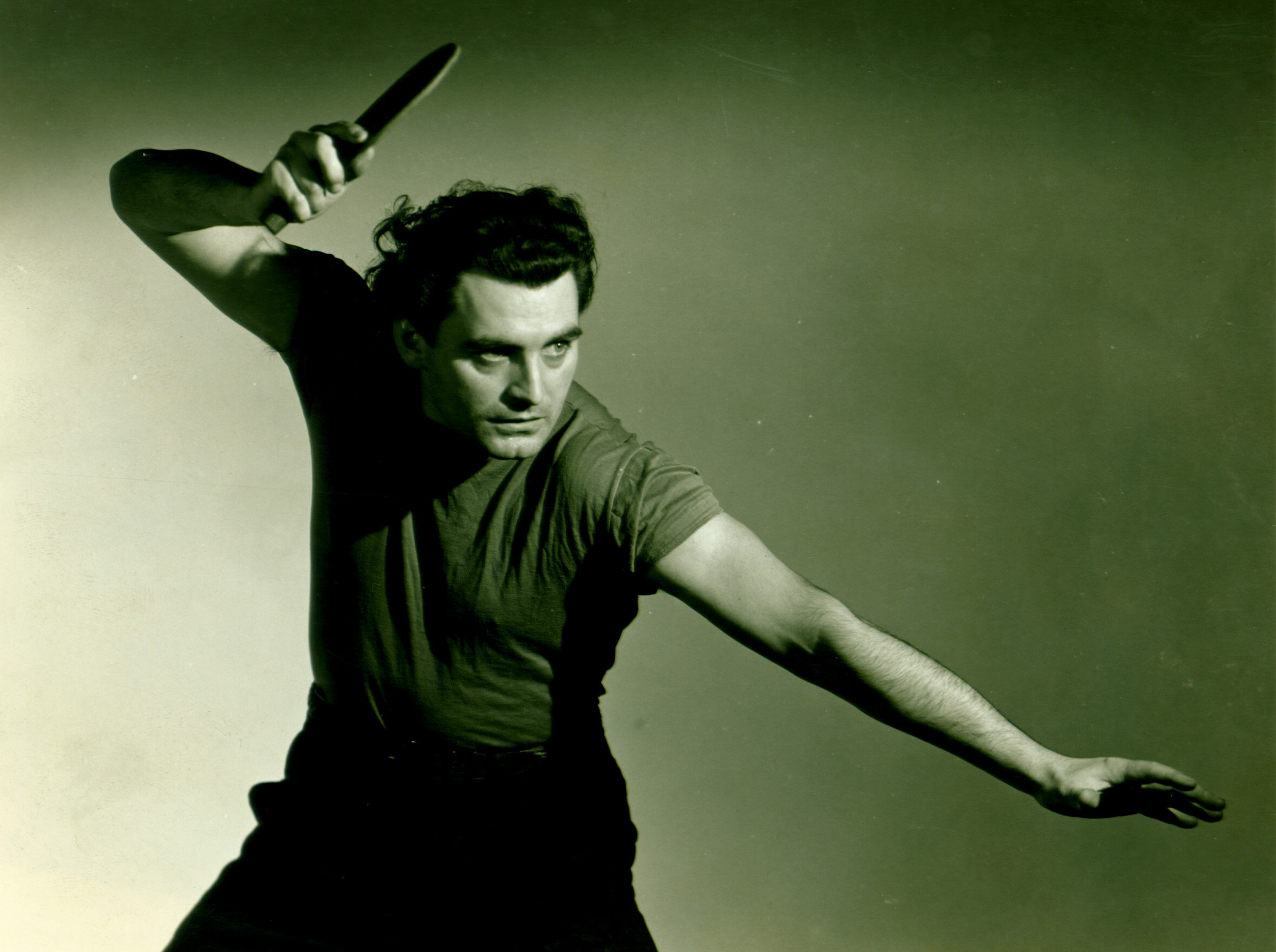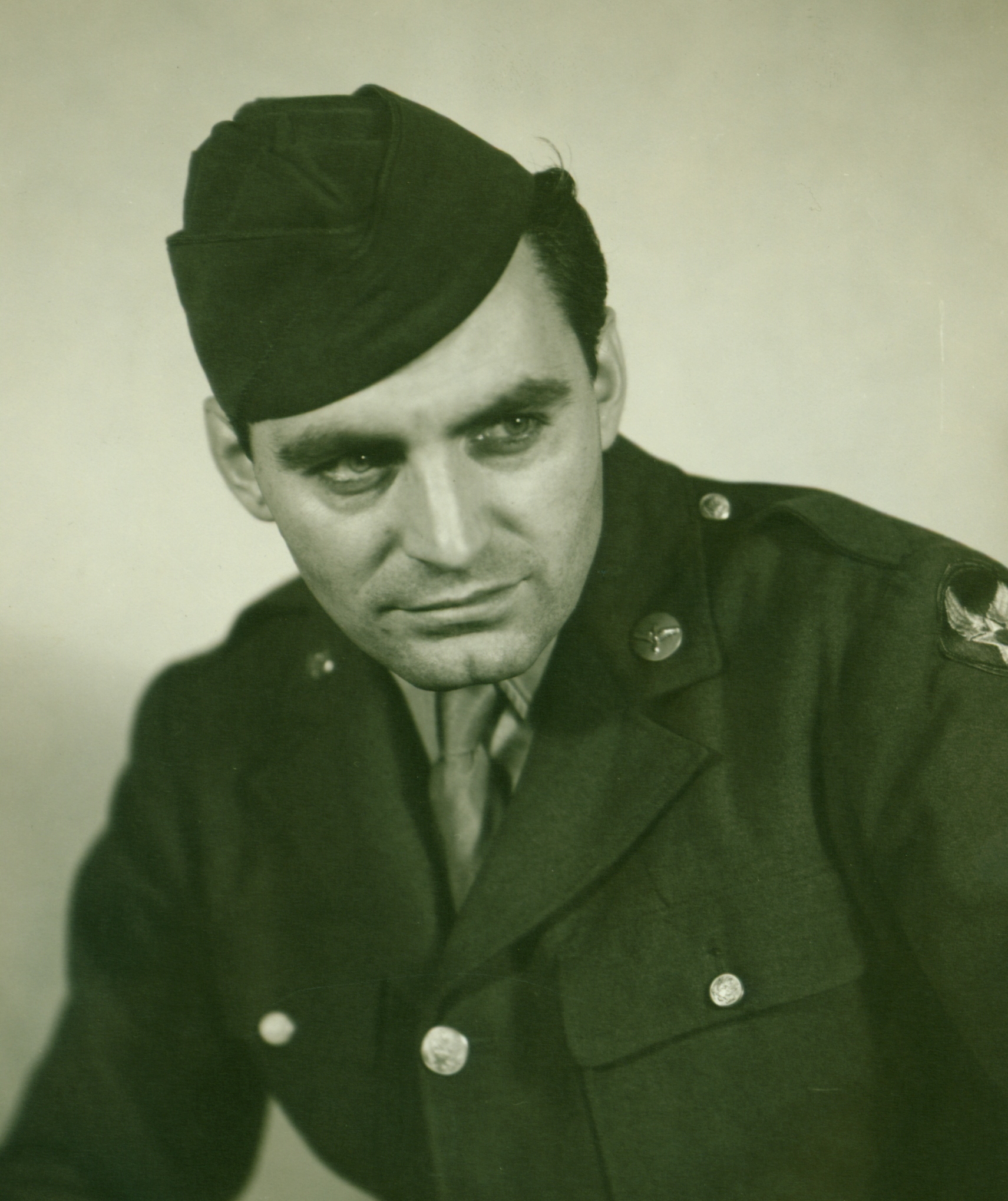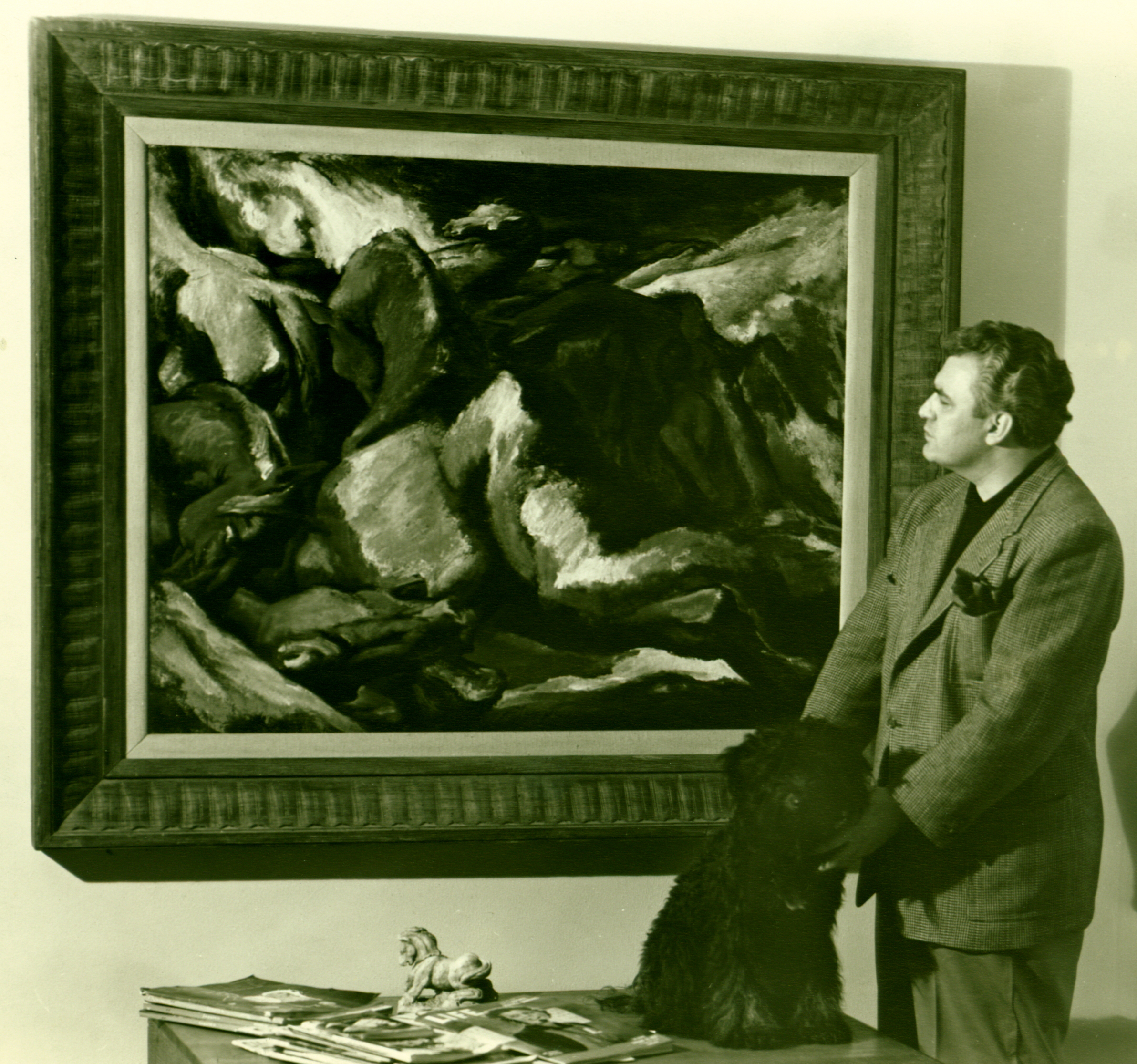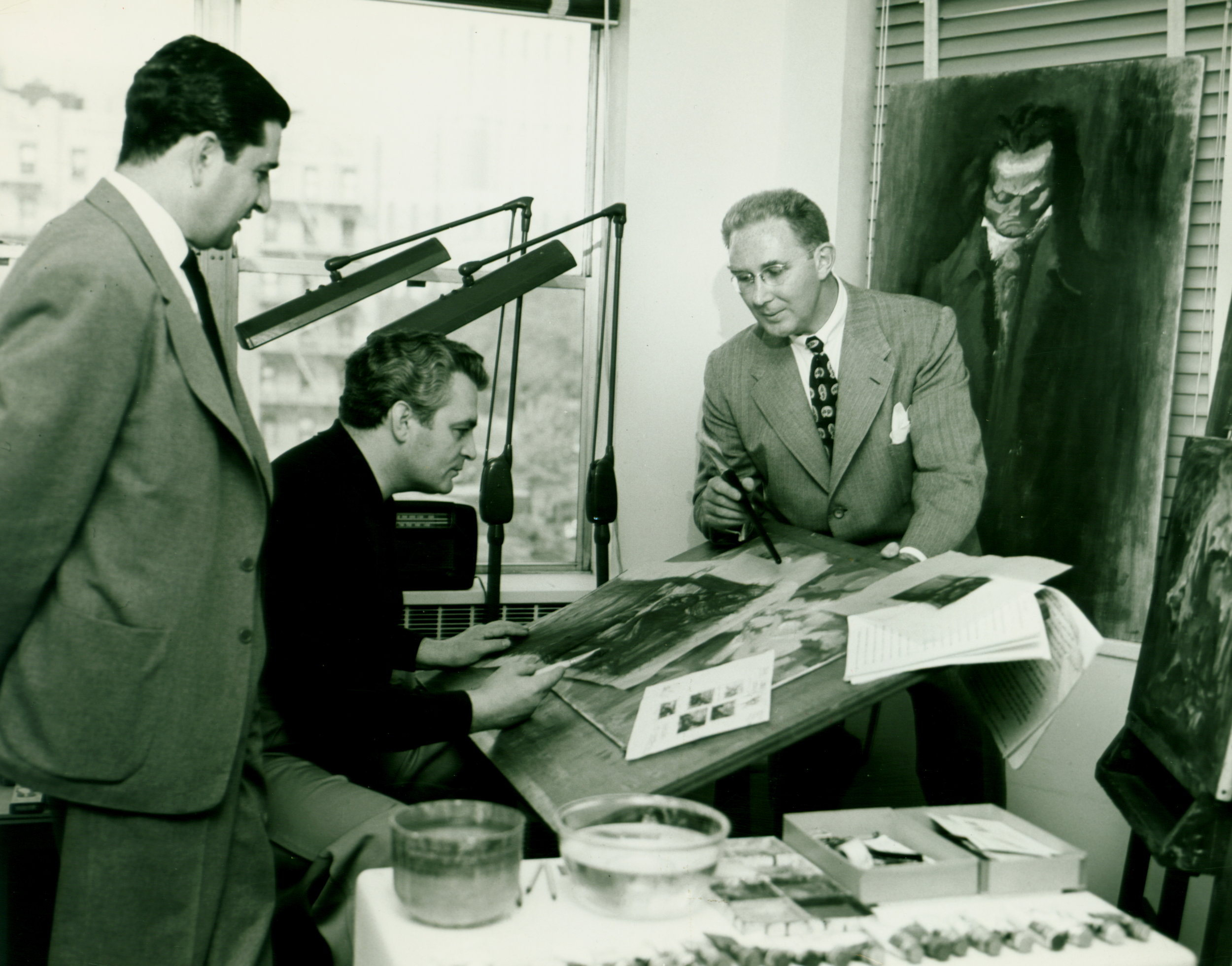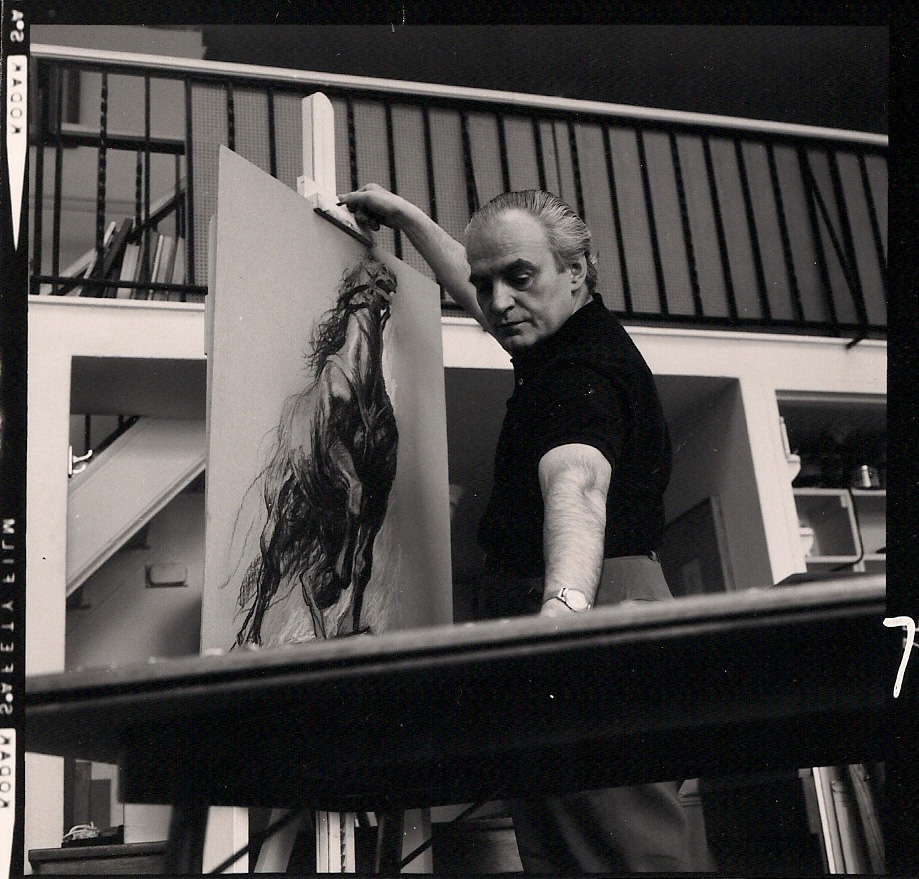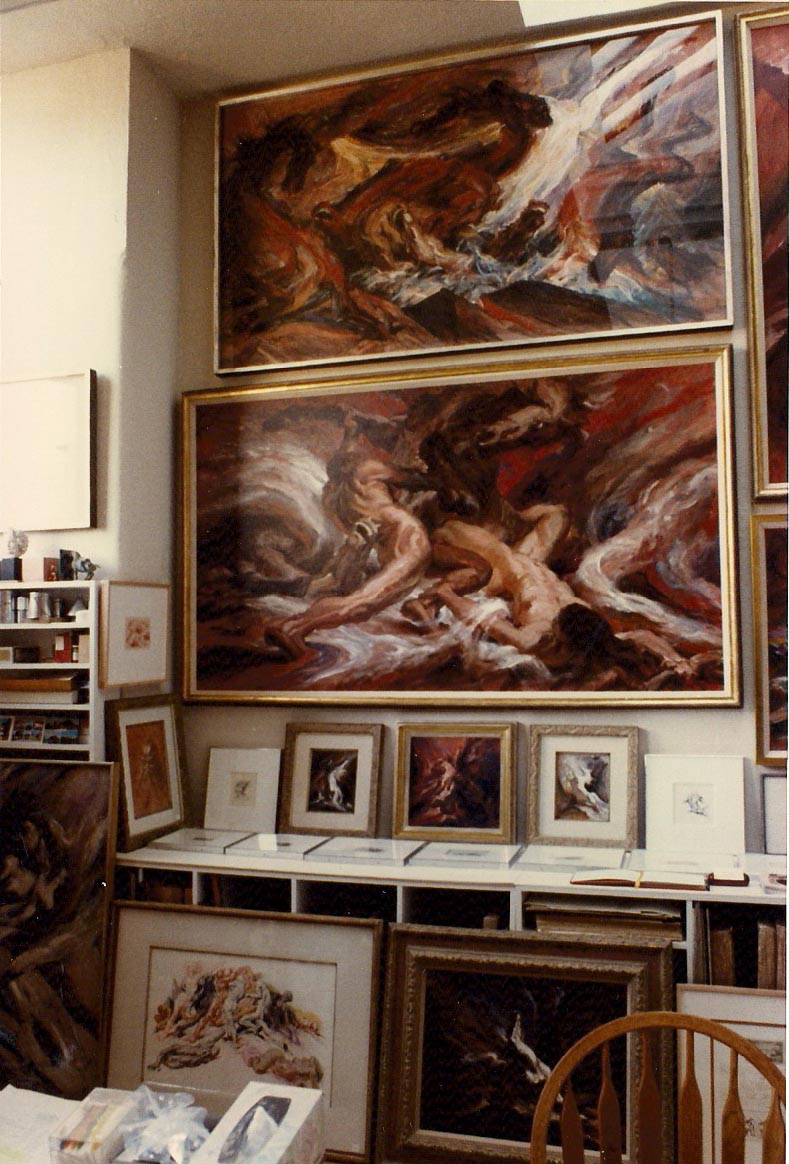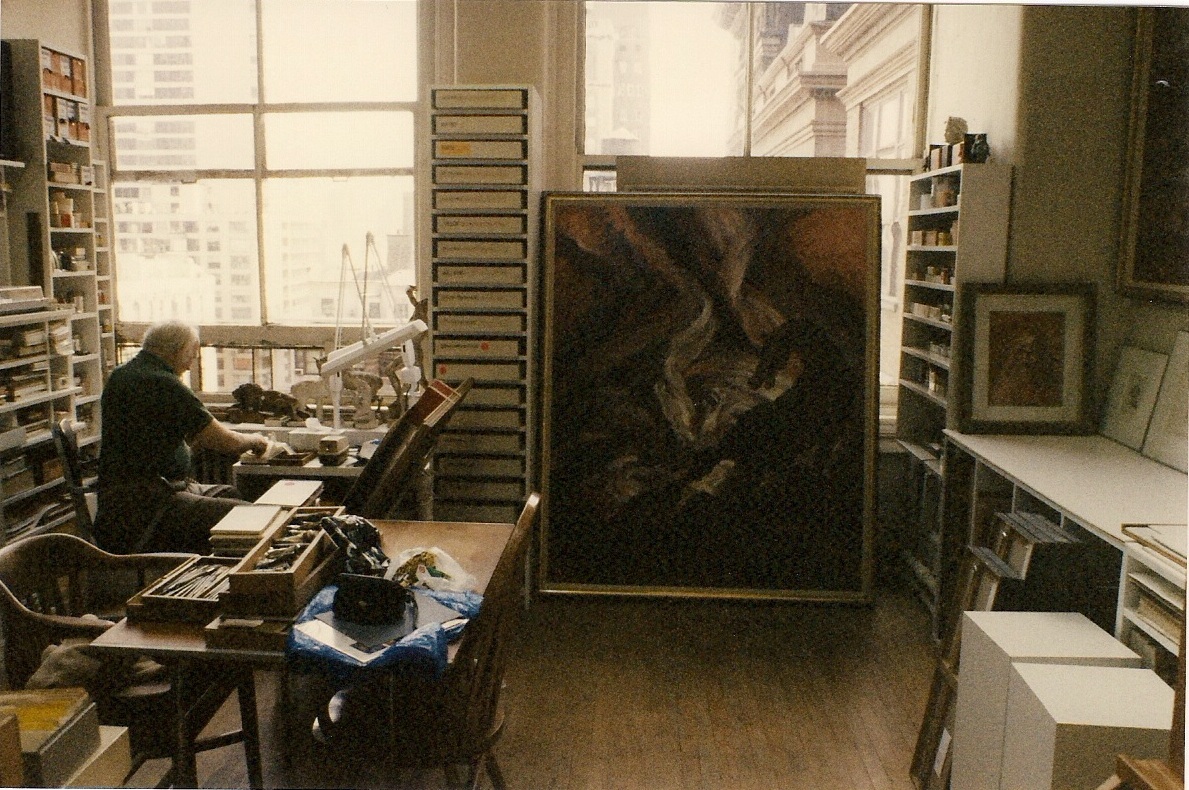BIOGRAPHY
1910
BIRTHPLACE
Gustav Rehberger was born October 20, 1910, on a farm in Riedlingsdorf, Austria "with an abundance of animals and birds and all of nature's other wonders." as Gustav described. He was the youngest of three children. From the tender age of two years old, Rehberger demonstrated an innate artistic ability; using up all the paper in the house drawing and scribbling on it.
Gustav’s childhood home was simply referred to as “Riedlingsdorf #153” (Photo by Gustav Rehberger in 1937)
Theresia Piff, Gustav's maternal grandmother's house (Photo by Gustav Rehberger in 1937)
Gustav Rehberger's parents emigrated to America when he was just three years old. Gustav along with his brother and sister remained in Austria and were raised by Gustav's maternal grandparents. They would not see their parents again for over seven and a half years. The sudden departure of their parents in the middle of night deeply affected them.
Ellis Island History Project
Gustav shared vivid memories of his life and childhood in his interview with The Ellis Island Oral History Project at the Ellis Island National Museum of Immigration on October 2, 1993. Read a transcript of The Ellis Island Oral History Project Interview with Gustav Rehberger on October 2, 1993 or listen to the audio below.
Gustav remembered, “They left in the middle of the night, my legs were cold. Now, I remember my father holding me in his arm, and I heard the word ‘KRIEG’, which means war. That's the only thing I remember at that time. And then we didn't see them until seven-and-a-half years later.”
He further recalled, “…one of the things I remember most is that since we were war babies, you know, we wore wooden shoes split in half, and then there was a little canvas loop over it, and then we didn't have any socks. We wrapped rags over our feet in the wintertime so we wouldn't freeze.”
Rehberger started drawing when he was three years old. His older brother and sister took his drawings to school in Pinkafeld to show their teachers. When he started school two years later, his reputation had preceded him. His teachers would say, "Hier kommt der Meister," or here comes the Master. Gustav Rehberger's parents returned to Austria in 1920, after the end of WWI. They soon realized that young Gustav would have better opportunities in America.
Photo by Gustav Rehberger in 1937
Rehberger loved to joke with his students about the manure heap next to the house he grew up in. He would often quip, “not bad for a whippersnapper who grew up next to a manure heap.” He never forgot his humble beginnings.
1923
Age 12
Ellis Island Passport Photo
The parents, along with their three children, sailed on the SS Munchen (Munich) and arrived at Ellis Island on the evening of July 2, 1923. When Gustav stepped off the boat he spoke no English, only German and Hungarian. The family then traveled by train and arrived in Chicago on the evening of July 3rd. The sight of the iconic Wrigley Building all lit up at night dazzled him and reminded him of a wedding cake. They stayed with relatives that night. On the morning of July 4th, he woke up startled by the loud noise of fireworks. His cousin explained the reason for the commotion. The excitement of his first day in America never left him. Every year at this time, he would say: "The Fourth of July is very special to me. This is the anniversary of my first day in America. Coming to America was the best thing that could happen to me." After only a year in Chicago, Gustav proudly won a spelling bee.
Historical Note: In the 1920s, a married woman’s public identity was tied to her husband, and passports reflected that in only being issued to the husband, with his wife being a literal notation. Children under a certain age were also required to be on their father's passport.
1926
Age 15
REHBERGER WINS SCHOLARSHIPS
1924-30
Chicago
Gustav was a born daredevil. His dream was to be a Hollywood stuntman. He was enthralled by Harold Lloyd’s movies and attempted incredible stunts. Once jumping off a bridge with his older brother John watching, he landed flat on his back and blacked out for several minutes. Horrified, John stood frozen thinking he’s dead!….he’s killed himself… and wondered what he was going to tell 'Ma and Pa.'
1937
Innsbruck
1940s – 50’s
The "Babe Ruth" of Table Tennis
In addition to his many artistic endeavors, Gustav was also an international table tennis competitor. In 1943-44, Rehberger was the 23rd nationally ranked table tennis player and was noted for having a terrific forehand drive, an airtight defense and agile footwork. Gustav also created the artwork for various table tennis exhibitions including the US Open National Table Tennis Championship in 1962 and 1972.
In this video, you can see Gustav’s airtight defense and agile footwork in two table tennis exhibitions. In 1942, “Gus” Rehberger takes on Alvin Nordhem who at the time was recognized as one of the best players in Illinois. In 1952, “Gus” plays Johnny Somael, who was the Men’s Singles US Champion in 1944.
1943-66
New York
1970's
In the mid 1970's, despite being considered a pioneer in use of expressionism in American illustration and design, Rehberger ceased commercial and illustration work and focused on fine art. He describes his inspiration in this artist statement.
My Love for the Horse
"My great love for the horse dates back to my earliest childhood days on a farm in Riedlingsdorf, Austria with an abundance of animals and birds and all of nature's other wonders.
I shall always remember a specific experience, when I was barely three years old, while playing, I put my arms around a white rocking horse, and at that instant, I felt a strong sense of security. That moment was the beginning of my love for the horse.
While still a boy -- I lived through a major flood, a bursting dam, a deluge, storms, cyclones, twisters, wagons turned over, roof tops blown off and then a train wreck -- among other disasters.
All of this left an indelible impression -- and inflexibly influenced my artistic expression.
To my boyish mind, all the power and turbulence of the natural world was embodied in the horse, and since that time, the horse has never left my side--we had become one. And now today, I am the horse, and the horse is me--almost always intense, almost always in storm, many times apocalyptic, but always valiant.
The horse is my inner strength, my spirit and turbulence, lashing out against a world, which is wearing blinders.
The correlation of the noble spirit of art and music, remain the inspirational force that is the wellspring of my creativity."
GUSTAV REHBERGER
1951 - 95
Carnegie Hall Studio
I do not merely paint a picture, I build it into a lasting structure.” GUSTAV REHBERGER
AT&T Presents - Carnegie Hall Tonight
In 1987, Gustav was was interviewed for the weekly radio broadcast series AT&T Presents – “Carnegie Hall Tonight”. It took place in Gustav's Studio 1206 in Carnegie Hall Studio Towers, which is where he lived and worked from 1951 - 1995. The interview produced by Steve Mencher and narrated by John Rubenstein tells of his humble origins in Austria and how his childhood experiences and his love of music influenced his artistic genius. It was first broadcast on WNCN-FM 104.3 radio on March 12, 1987. Listen to the broadcast here.
The following video is a production of Gustav Rehberger Fine Art that uses archival images and videos to accompany the original radio interview from 1987.
Peter Rosen Interview with Gustav Rehberger for "Carnegie Hall at 100: A Place of Dreams"
In 1990, Gustav was interviewed for "Carnegie Hall at 100: A Place of Dreams", a gala event celebrating the 100th birthday of Carnegie Hall. The interview took place in Carnegie Hall Studio 1206 and was conducted and directed by Peter Rosen. Gustav works on a new painting and shares stories from the nearly 50 years he spent living and working in Carnegie Hall Studio Towers from 1951 - 1955. "Carnegie Hall at 100: A Place of Dreams" aired on PBS on January 2, 1991.


